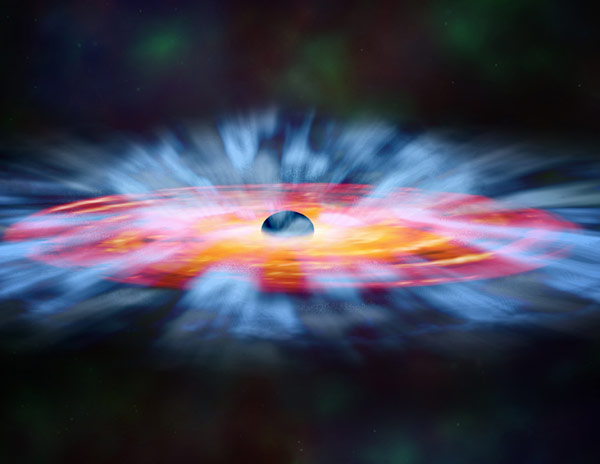Glitches Slow Start of 'Black Hole Machine'

GENEVA (AP) — The world's most ambitious particle collider — which scientists hope could reveal what matter is made of — might not be fully functional until next year, months after its scheduled startup date, officials at the European Organization for Nuclear Research said Thursday.
Scientists have been scrambling to redesign a key U.S.-built part of the collider — located in a tunnel deep beneath the Swiss and French countryside outside Geneva — that broke “with a loud bang and a cloud of dust'' during a high-pressure test for the collider last month.
Officials at the organization, known by the French initials CERN, said the possible delays are the result of the magnet failure and cooling processes that have been slower than expected for the 17-mile tunnel.
The aim of the CERN experiment is to make subatomic particles — in this case protons — travel at nearly the speed of light until they collide, emitting a shower of even smaller particles that will reveal mysteries about the makeup of matter.
“It's possible now, even likely that the November date will fall off the map and we will be going straight into high energy running next spring,'' CERN spokesman James Gillies said. “We're mostly there, actually. There are problems happening here and there and it would be strange if there weren't at a project of this magnitude.''
The part that failed March 27 was in a massive, super-cooled magnet that is designed to focus streams of protons so that they collide and allow scientists to study the results of the collision, giving them a better understanding of matter, according to Fermilab, based outside Chicago.
Fermilab, which built the 43-foot magnet, said its teams, working with colleagues from CERN, have determined what caused the “serious failure'' and are working on a solution. The collider has more than 1,700 magnets spaced around its circumference.
Get the world’s most fascinating discoveries delivered straight to your inbox.
Gillies said the last of the magnets was lowered into the ground on Thursday.
“The next step is of course to fix these 'Fermi' magnets,'' said Renilde Vanden Broeck, a spokeswoman at the organization.
The $1.8 billion collider is replacing a less-powerful model that was removed from the tunnel in 2000.
The magnets for the new model will be cooled to a temperature of minus 456 Fahrenheit so they can convey extremely high currents without any loss of energy, enabling them to control the path of the protons, which are 2,000 times heavier than the much more easily directed electrons used in the earlier accelerator.
“At every step everything that can be tested is tested, and that will continue to be the case,'' Gillies said, adding that missing the November date would push the start of proper experiments back several months because CERN shuts its accelerators in the winter, largely to save on electricity costs.
“Real physics running next spring,'' he said. “Whatever happens between now and then I think that's what we'll aim for.''
The lab's 20 European member countries, as well as observer states like the United States and Japan, contribute to CERN's annual budget of about 1 billion Swiss francs ($800 million).
About 6,500 scientists from 80 countries — half the world's researchers specializing in particle physics — work at CERN, which became a main focus for world research into the nature of matter and the origins of the universe after the U.S. Congress in 1993 halted construction on the proposed Superconducting Super Collider in Texas.
Associated Press writer Frank Jordans contributed to this report.
- Top 10 Ways to Destroy Earth
- Despite Rumors, Black Hole Factory Will Not Destroy Earth
- Huge Refrigerators Create Temps Colder than Space
- Oops! Giant Particle Collider Magnet Self-Destructs


